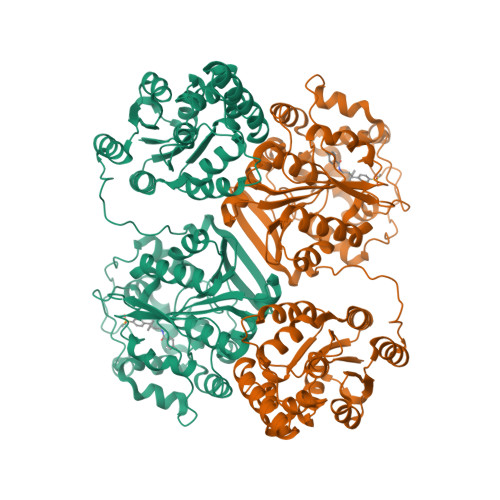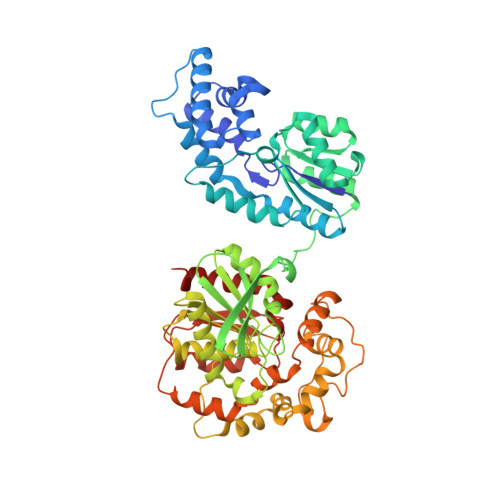Structure-based optimization of arylamides as inhibitors of soluble epoxide hydrolase.
Eldrup, A.B., Soleymanzadeh, F., Taylor, S.J., Muegge, I., Farrow, N.A., Joseph, D., McKellop, K., Man, C.C., Kukulka, A., De Lombaert, S.(2009) J Med Chem 52: 5880-5895
- PubMed: 19746975
- DOI: https://doi.org/10.1021/jm9005302
- Primary Citation of Related Structures:
3I1Y, 3I28 - PubMed Abstract:
Inhibition of soluble epoxide hydrolase (sEH) is hypothesized to lead to an increase in circulating levels of epoxyeicosatrienoic acids, resulting in the potentiation of their in vivo pharmacological properties. As part of an effort to identify inhibitors of sEH with high and sustained plasma exposure, we recently performed a high throughput screen of our compound collection. The screen identified N-(3,3-diphenyl-propyl)-nicotinamide as a potent inhibitor of sEH. Further profiling of this lead revealed short metabolic half-lives in microsomes and rapid clearance in the rat. Consistent with these observations, the determination of the in vitro metabolic profile of N-(3,3-diphenyl-propyl)-nicotinamide in rat liver microsomes revealed extensive oxidative metabolism and a propensity for metabolite switching. Lead optimization, guided by the analysis of the solid-state costructure of N-(3,3-diphenyl-propyl)-nicotinamide bound to human sEH, led to the identification of a class of potent and selective inhibitors. An inhibitor from this class displayed an attractive in vitro metabolic profile and high and sustained plasma exposure in the rat after oral administration.
Organizational Affiliation:
Department of Medicinal Chemistry, Boehringer Ingelheim Pharmaceuticals, Ridgefield, Connecticut 06877, USA. anne.eldrup@boehringer-ingelheim.com

















